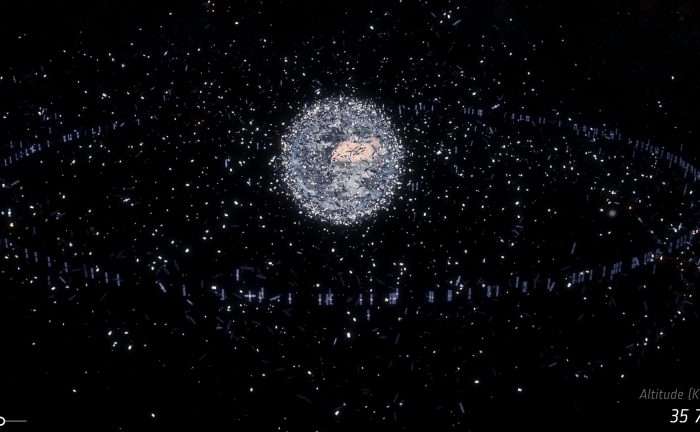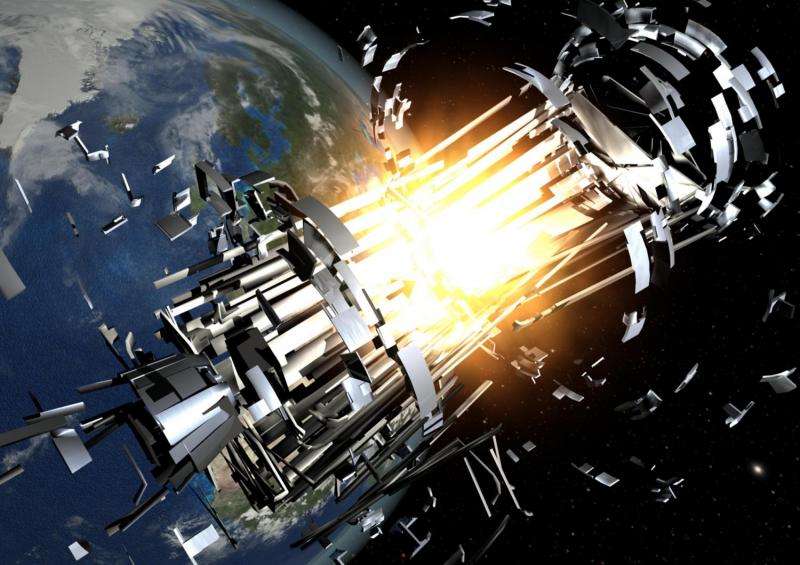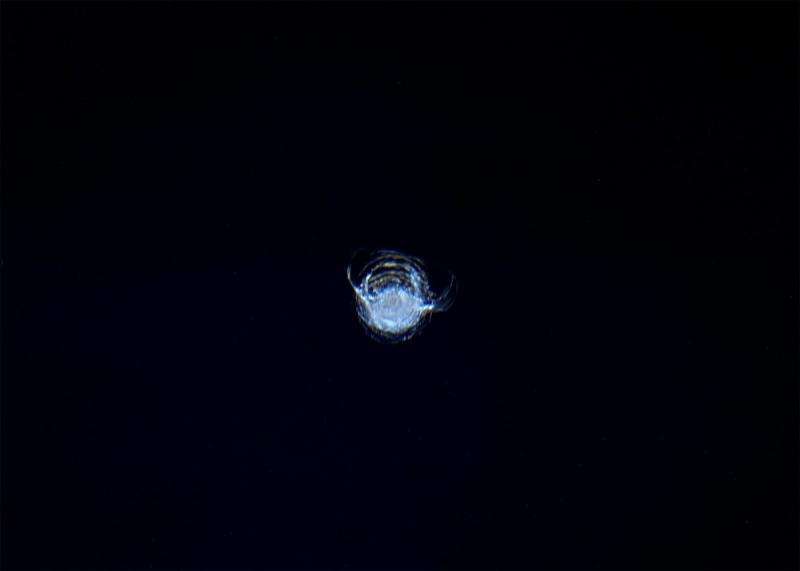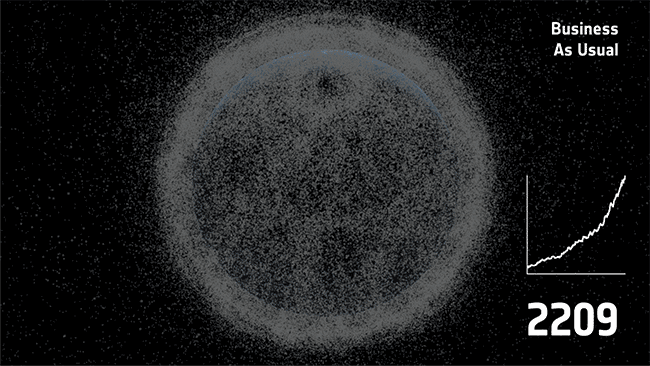Still image taken from a movie, Space debris ? a journey to Earth, to be released April 18th, 2017. Credit: ESA
Orbital debris, otherwise known as "space junk", is a major concern. This massive cloud that orbits the Earth is the result of the many satellites, platforms and spent launchers that have been sent into space over the years. And as time went on, collisions between these objects (as well as disintegrations and erosion) has created even more in the way of debris.
Aside from threatening satellites and posing a danger to long-term orbital missions – like the International Space Station – this situation could pose serious problems for future space launches. And based on the latest numbers released by the Space Debris Office at the European Space Operations Center (ESOC), the problem has been getting getting worse.
To break the numbers down, according to ESOC, about 5250 launches have taken place since the beginning of the space age, which officially kicked off on October 4th, 1957, with the launch of the the Soviet Sputnik 1 satellite. Of the many missions that have been launched since then, some 23,000 are still in orbit, while only 1200 are still operational.
However, this accounts of only 6% of all the actual objects in orbit. Another 38% can be attributed to decommissioned satellites, spent upper stages and mission-related objects (launch adaptors, lens covers, etc.). All told, an estimated 94% of objects in orbit qualify as being "space debris" – a term used to describe objects which no longer serve any useful purpose.
Sources of space debris include explosions of rocket bodies. Credit: ESA
About 64% of these objects are fragments from the many breakups, explosions and collisions of satellites or rocket bodies that have taken place over the past decades. In addition, there is evidence of a much larger population of debris that cannot be tracked operationally. That's where the ESA's latest numbers once again come into play.
According to various statistical models, there is an estimated 166 million objects in orbit that range in size from 1 mm to 1 cm in diameter. There is also another 750,000 objects that range from being 1cm to 10 cm in diameter, and about 29,000 objects that exceed 10 cm in diameter. The ESA and other space agencies around the world are responsible for tracking about 42,000 of the larger ones.
All told, the total mass of all the objects orbiting the Earth is estimated at 7500 metric tons (~8267 US tons). And between all this debris, a little over 290 break-ups, explosions and collisions events have taken place, resulting in the fragmentation of objects and the creation of many smaller pieces of debris. Each and every one of these is considered a serious threat due to the relative orbital velocities they have.
The chip in the ISS’ Cupola window, photographed by astronaut Tim Peake. Credit: ESA/NASA/Tim Peake
Essentially, orbital debris can reach speeds of up to 56,000 km/h due to the Earth's rotation. At this speed, even a centimeter-sized piece of debris can seriously damage or disable an operational spacecraft. Meanwhile, a collision with an object that is larger than 10 cm will lead to catastrophic break-ups, releasing more hazardous debris clouds that can cause further catastrophic collisions – a phenomena known as "Kessler Syndrome".
Left unchecked, it is acknowledged that the problem will become exponentially worse. Little wonder then why the ESA and other space agencies are talking about implementing "space debris mitigation measures". Such measures, which include reducing mass in high-density regions and designing craft with safe re-entry technologies, could curtail the growth rate of space debris populations.
There's also proposals for "active removal", which would target the debris fields already there. Already, there are several ideas on the table, ranging from space-based lasers that could clear debris out of the path of the ISS to spacecraft that could latch onto debris and deorbit it. These and other related subjects will all be raised at the upcoming 7th European Conference on Space Debris.
ESA graphic titled “Why Space Debris Mitigation is needed”. Credit: ESA
This conference will be taking place from April 18th to 21st, 2017, at the European Space Operations Center in Darmstadt, Germany. As the largest gathering of its kind, this four-day conference will see internationally renowned scientists, engineers, operators, lawyers and policy makers from around the world coming together to discuss different aspects of space debris research.
This will include measurement techniques, environment modelling theories, risk analysis techniques, protection designs, mitigation and remediation concepts, and policy & legal issues. In addition to providing a forum for presenting and discussing the latest results, this conference also is chance for experts to define future directions for research.
The space lanes need to be cleared if we hope to commercialize and exploit Low Earth Orbit (LEO) in the coming years. And the good folks who conduct research aboard the ISS and China's Tianglong-1 space station would surely appreciate it.
Source: Universe Today



























